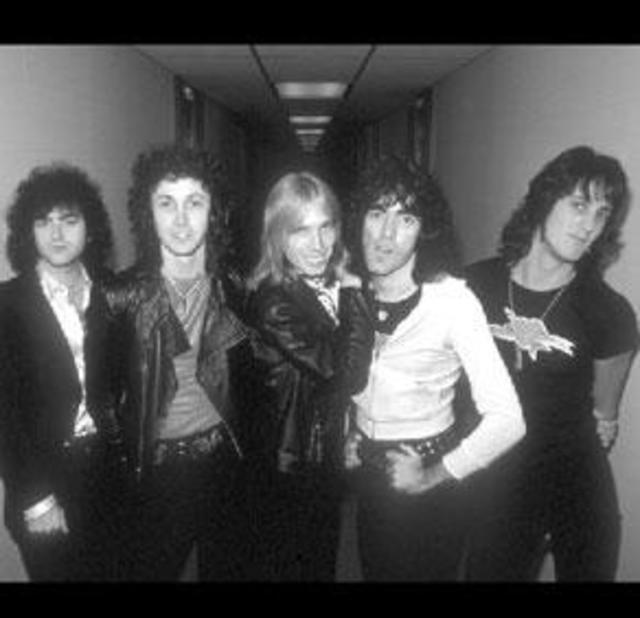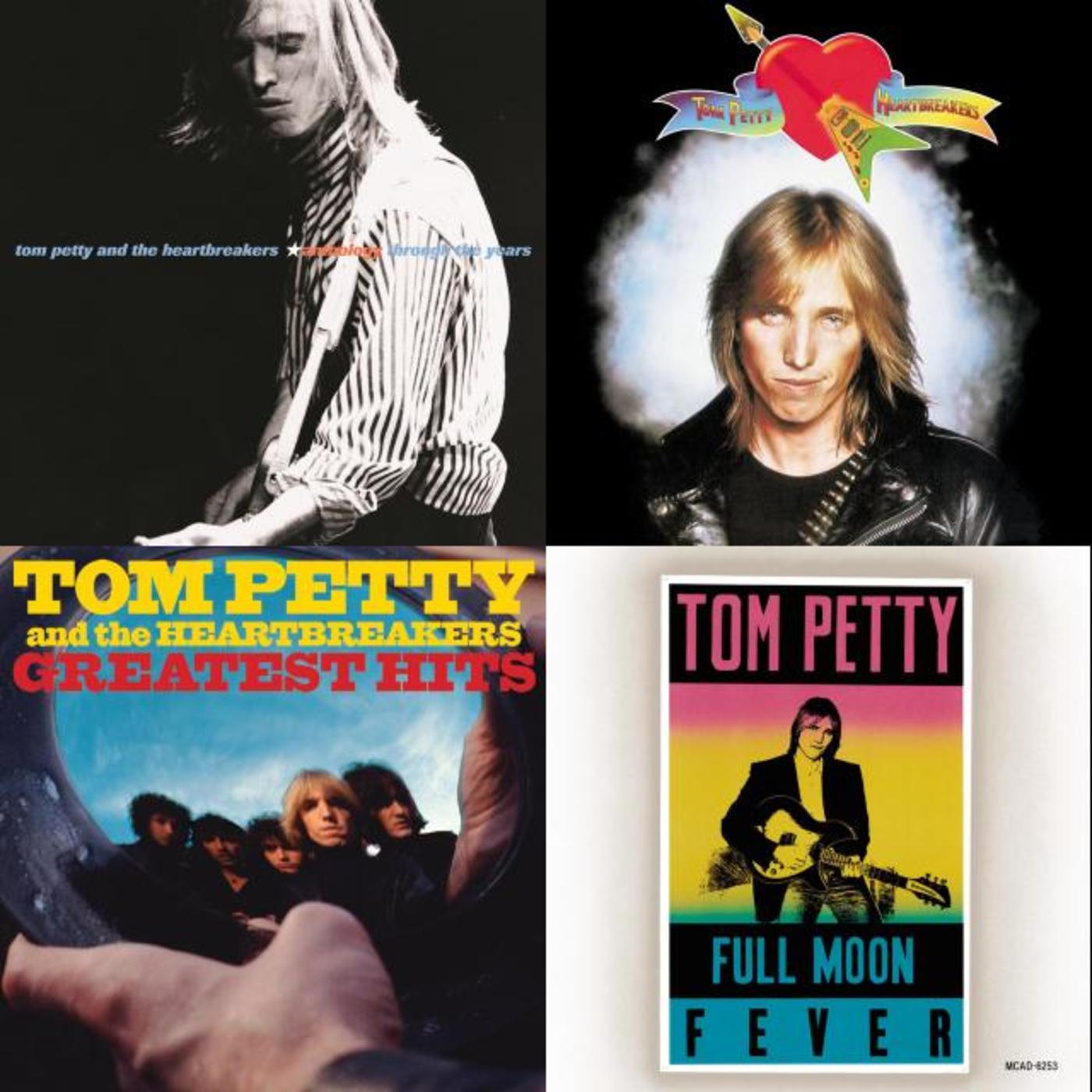Tom Petty and the Heartbreakers

Inductees: Tom Petty (vocals, guitar; born October 20, 1950), Ron Blair (bass; born September 16, 1948), Mike Campbell (guitar; born February 1, 1950), Howie Epstein (bass; born July 21, 1955, died February 24, 2003), Stan Lynch (drums; born May 21, 1955), Benmont Tench (keyboards; born September 7, 1953).In a sense, Tom Petty and the Heartbreakers are America's band. Durable, resourceful, hard-working, likeable and unpretentious, they rank among the most capable and classic rock bands of the last quarter century. They've mastered the idiom's fundamentals and digested its history while stretching themselves creatively and contributing to rock's legacy. Moreover they are, like such compatriots as Bruce Springsteen and the E Street Band, a people's band, writing of everyday struggles and frustrations while offering redemption through tough-minded, big-hearted, tuneful songs.Tom Petty and the Heartbreakers' knack for generating concise, tuneful pop nuggets has kept them consistently on the charts and in critics' and fans' good graces, and they've weathered passing fads by sticking to the basics of solid, melodic songs delivered with passion and conviction. They've also hung together through good and bad times, resulting in a lengthy shared history and deep musical bonds that few other bands can approach. They are rock classicists with a restless streak, innovating atop a rock and roll base that's as solid as bedrock.Tom Petty, Mike Campbell and Benmont Tench first came together in the early Seventies as Mudcrutch in their hometown of Gainesville, Florida. Like Lynyrd Skynyrd, with whom they occasionally shared bills, they married British Invasion pop with harder Southern rhythms, and they became local stars. Signed to the Tulsa, Oklahoma–based Shelter Records, they recorded a couple of singles as Mudcrutch and then disbanded, only to regroup in Los Angeles as Tom Petty and the Heartbreakers, with bassist Ron Blair and drummer Stan Lynch, a year later.Their self-titled debut album appeared in 1976. It boasted the tunefulness of Sixties pop, the sinewy crunch of Seventies rock and the bristling energy of the nascent punk movement. Though they were not punk-rockers per se, Petty and the Heartbreakers did their part to revitalize rock in the mid-to-late Seventies with their first three albums – Tom Petty and the Heartbreakers ("Breakdown," "American Girl"), You're Gonna Get It! ("I Need to Know," "Listen to Her Heart") and Damn the Torpedoes.The last of these was an early peak for the band and one of the essential rock albums of the decade. Strong from start to finish, it contained the classic tracks "Refugee," "Even the Losers," "Don't Do Me Like That" and "Here Comes My Girl." It also revealed Petty's depth of conviction and fighting nature. When his record company changed hands, Petty refused to be "bought and sold like a peace of meat," and the ensuing legal tangles held up the release of the album, whose recording costs Petty personally bore until he was forced to declare bankruptcy. The case was eventually settled, with Petty and the Heartbreakers assigned to a specially created MCA subsidiary, Backstreet Records. The album – its combative title reflective of the band's attitude during the legal standoff – rocketed to #2 for seven weeks and produced a Top Ten hit, "Don't Do Me Like That." Tom Petty and the Heartbreakers, who had been headlining shows since 1977, were now bonafide superstars.Their fourth album, Hard Promises, also had a difficult gestation, as Petty battled the record company again. This time the issue was the album's list price, which MCA wanted to raise by one dollar over the prevailing rate of $8.98. "If we don't take a stand, one of these days records are going to be $20," Petty argued in 1981, unwittingly foreshadowing the latter-day era of CDs. Standing up for the long-suffering rock fan, Petty held firm and won that skirmish, too. By their fifth album, Long After Dark (1982), the band had become an incomparably tight, well-oiled unit – and one in need of a little risk-taking, by Petty's reckoning.Southern Accents, which followed two and a half years later, took a more experimental and conceptual turn. The group utilized two producers (Dave Stewart and Jimmy Iovine) and employed outside musicians as well. Southern Accents, which found Petty returning to and contemplating his Southern Roots, yielded an offbeat hit, "Don't Come Around Here No More" (#13). The album did not come together easily and Petty suffered a hand injury during its making that nearly cost him his ability to play the guitar (though he recovered completely). The big-budget tour that followed the album's release – Petty and the Heartbreakers were joined by backup singers, a horn section and visual props – resulted in the double live album Pack Up the Plantation.Tom Petty and the Heartbreakers backed Bob Dylan on a pair of tours in 1986 and 1987. Dylan noted, "I've got a lot of respect for Tom – he's a deep and soulful cat. Tom is a heroic character in his own kind of way. And he's got a very good band; they're quick, and they know the fundamental music." Dylan's spontaneous, first-take approach rubbed off on the group when they went to record Let Me Up (I've Had Enough), which came together more quickly than its studio predecessor. Following that release, Petty went solo.Working primarily with guitarist Campbell and producer Jeff Lynne – a fellow member of the "temporary supergroup" the Traveling Wilburys and the former leader of the Electric Light Orchestra – Petty cut his first solo album, Full Moon Fever, released in 1989. Relying heavily on acoustic guitars and succinct, poppy arrangements, Full Moon Fever marked a turning point for Petty. His music henceforth took a simpler, more melodic and decidedly pop-oriented tack that seemed deliberately shorn of stress or overreaching.The more easygoing Petty saw Full Moon Fever became his best-selling album to date, climbing to #3 and yielding the biggest hit of his career, "Free Fallin'" (#7). Subsequent albums, both with the Heartbreakers (1991's Into the Great Wide Open, the 1996 soundtrack She's the One) and without (1994's Wildflowers), worked toward the same ends of clarity and simplicity with great success. Wildflowers inaugurated a label switch from MCA, where the Petty and the Heartbreakers had spent the previous 20 years, to Warner Bros.In 1993, Petty and the Heartbreakers released their generous, 17-track Greatest Hits CD. One of its two new tracks, "Mary Jane's Last Dance," became a Top Twenty hit. The album stayed on Billboard's Top 200 album chart for more than six years and even made the RIAA's list of 100 best-selling albums of all time for a spell. Playback, a six-CD box set retrospective, appeared in 1995. A hardcore fan's dream, fully half of it consisted of rare and unreleased material. In 1997, the group undertook a historic 20-night stand at San Francisco's Fillmore Auditorium. Echo, the group's first album of new music in five years, appeared in 1999 and was preceded by another lengthy run of shows at the Fillmore.Petty once said, "I'd like to see us break some new ground and leave some sort of mark on the music. That would be the nicest thing – to give something back, as noble as it sounds. If you could make some little dent in rock, where that little area is yours – that's what I'm striving for now." Surely, Tom Petty and the Heartbreakers have accomplished all that and more.

